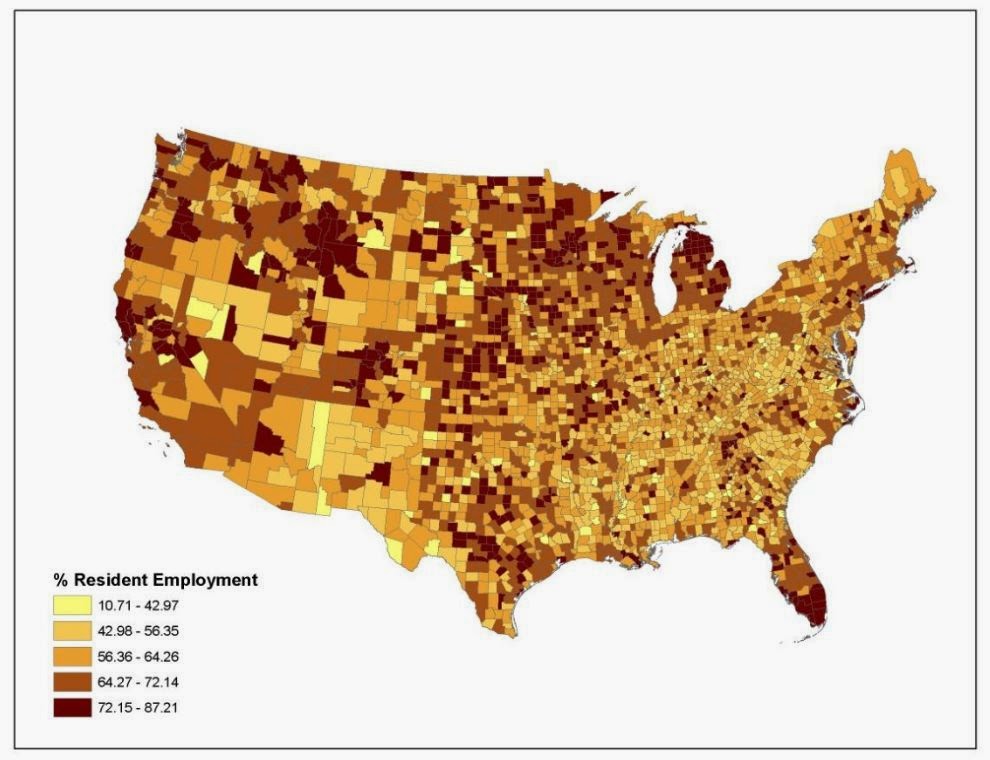What they found was that this question is addressed in a Federal Reserve Bank of Atlanta analysis of county level economic data for the 2000 to 2009 time period. Economist Anil Rupasingha examines the local share of employment by county and compares those numbers to real per capita income growth, employment growth, and poverty.
In most counties, employment in locally-owned businesses surpasses employment in "nonresident-owned" businesses. But the local share varies greatly by county, which you can see at a glance in the county-level maps included in the analysis. The share of employment in locally-owned businesses varies by county from 11 to 87 percent. The share of employment in nonresident-owned businesses varies by county from zero to 85 percent.
Percent of Residents Working in Locally Owned Businesses (2007)
 |
| Click to Enlarge |
"Historically, the most popular local economic development approach was to attract businesses outside a particular municipality, state, or region," says Rupasingha. But theories about local economic development are changing, he says, and "economic development based on local entrepreneurship is increasingly gaining traction." Which approach is better?
Local is better. According to the study's results, the greater the local entrepreneurship, the greater the per capita income and employment growth and the lower the poverty. Also and interestingly, smaller local businesses have a greater effect on local economic performance than larger local businesses. "My results suggest that fostering smaller local businesses may be good local economic development policy," Rupasingha concludes.
Locally, businesses with less than 50 employees make up about 98% of companies in Herkimer county and 95% of those in Oneida County. There are more than 10,000 people who consider themselves "self employed" in the region ! So obviously small businesses play a big part of our local economy.
